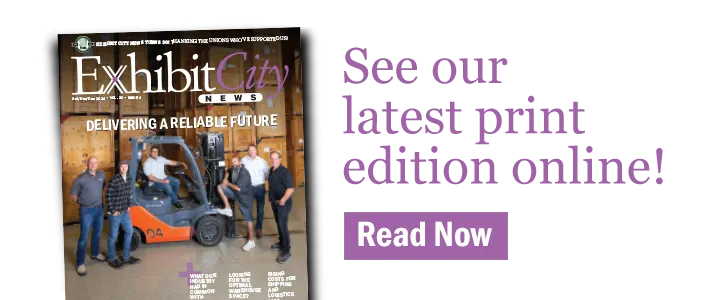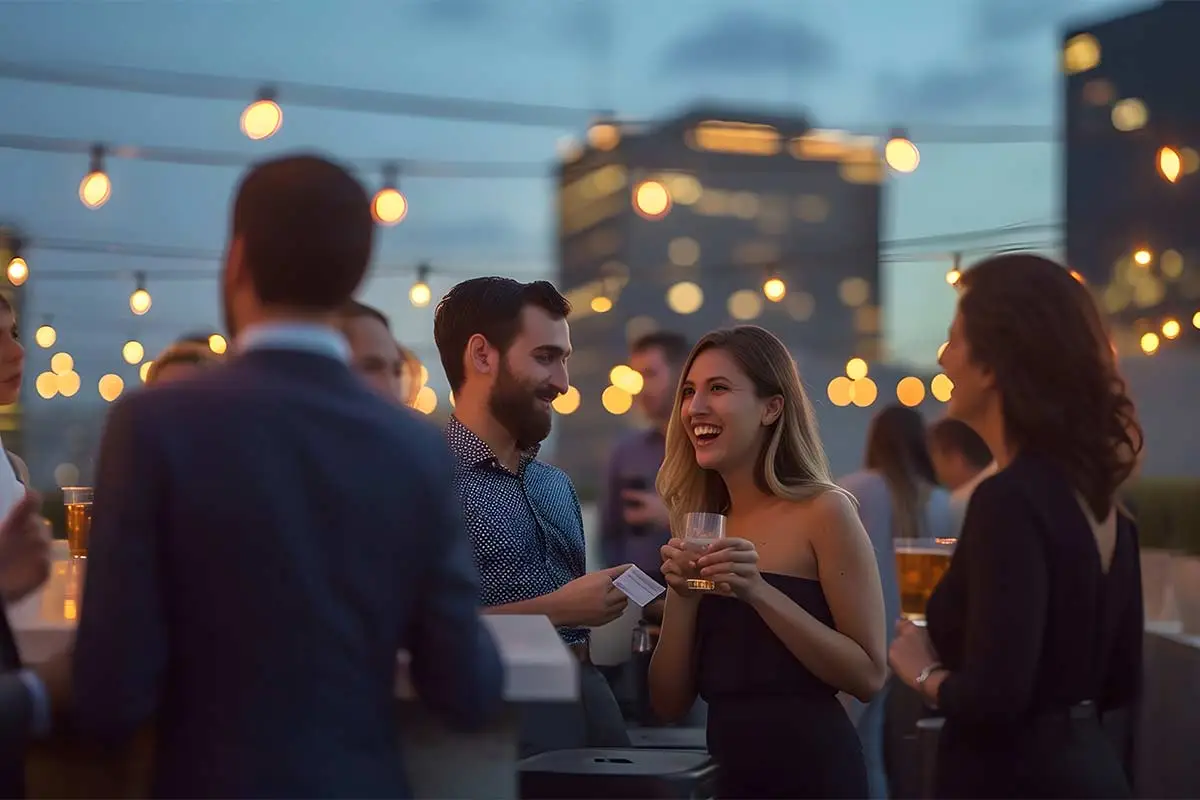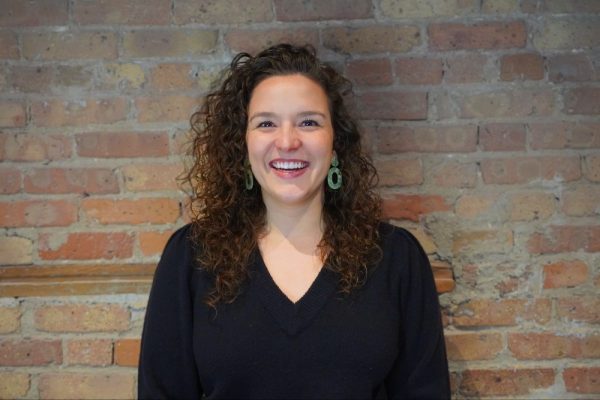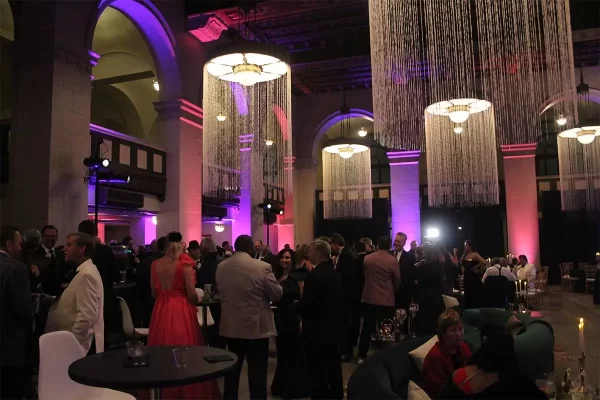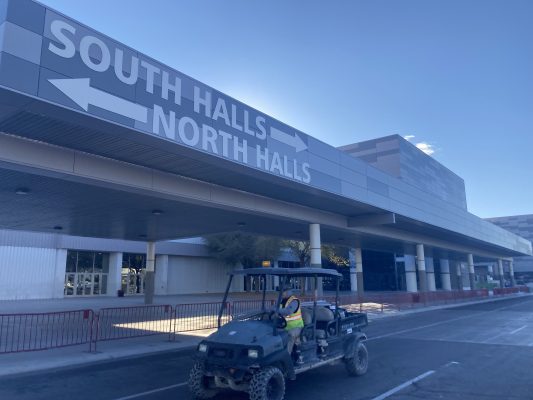by Sam Ogren
You look at your badge, complete with two perforated tickets tucked into the plastic holder—“ONE DRINK” printed in thick black letters—and you think about the look you’ll get when you order club soda. Hundreds of faces are in front of you, strangers deep in conversation with their twenty best friends. Stepping through the door, it feels like every eye snaps to you while dismissing you to the corner that collects everything or everyone uninteresting. You look back to the door, your exit. A bead of sweat, a cold flush, and a sharp lightning up your spine: fear. There’s no place, no time for it, not here. There’s no turning back—the only way is through.
This drama might make you chuckle. Fear? At a networking event? It may seem preposterous. However, for introverts, neurodivergent people, and those in recovery—to name a few—these events aren’t a bridge to advancement. Rather, small talk, free alcohol, strangers, and high pressure on growing careers are a potent combination of anxiety and stress.
But, if networking isn’t in your comfort zone, you cannot simply return to your hotel room and watch Housewives. You don’t randomly hit the big time. You need dedication, effort, and a willingness to try (and fail) to meet new people, uncover new opportunities, exchange ideas—and develop self-confidence.
Putting people together in a space is not networking. Planning networking doesn’t require money, it requires intent. The following are three ways in which we can improve networking events to be more meaningful, more productive, and more inclusive:
“Strangers are friends we haven’t met yet.”
By committing to a networking event, we decide to meet people and expect a return on our investment by developing new relationships. It’s difficult to break into established groups with authenticity and vulnerability, but the solution isn’t to hang out with your friends or coworkers.
The best networking events eschew the same-old, same-old icebreaker games using pet names, first cars, or fun facts. How about reworking an exercise from post-pandemic events where color-coded wristbands indicated personal space preferences? The same tactic can now denote expertise or interest. “Tell me about your new offices” — blue button. “We’re looking to hire” — green wristband. “AI Expert” — red lanyard. “I’m just happy to be here!” — yellow badge ribbon. Remove the “What do I say first?” problem, alleviate social anxiety, and enhance the potential interaction by posting these categories at the door.
“Why’s it always so loud?”
Many networking events feature high echoing ceilings, amplified pop hits of the Early 2000s, limited seating, pumped-up A/C, and a focus on access to the bar. The networker’s “terrarium” is set to 72 degrees and florescent; only the carpet changes, and after a while, that’s set on repeat.
Factors beyond our control dictate the environment, but can we create spaces for interaction, engagement, and collaboration? Maybe by using partial walls or sound-capturing materials, we can reduce the dB level to allow conversation and reduce stressors. Remember, some people prefer to sit and not be relegated to the edges; creating accessibility to foster productive, meaningful conversations can help communication.
“To your health…”
“You got two tickets, but I can get you more.” “Here, you look like you could use more fun; take my extras.” “It’s a cash bar, but I put my card down for us. Go ahead.”
The encouragement of a “drinking culture” can cause uncomfortable situations, not to mention embarrassing moments. Do themed drinks drive conversation, or could we replace them with varietal teas, coffees, customizable smoothies, or desserts? Do we need a social lubricant, or can we create the initial momentum in a conversation? Alcohol may be a standard, but it doesn’t have to be a centerpiece.
Then there are generational differences. For Millennials and GenZ, not only is networking not in their comfort zones, but they are drinking less than older generations did at their age, due to increased awareness on negative health impacts of alcohol and other social and cultural changes occurring within their generation. Their appetizer preferences don’t run to pigs in a blanket either. They are health conscious, often vegetarian or vegan; all the staples of the stereotypical event are suspect.
It’s simple. Create conditions for relationships to happen. Focus on meaningful conversations, inclusive spaces, new ideas, and stronger business communities.
The night air hits your face, you take a deep breath and reflect on the past few hours. In one pocket, your fingers tingle from a thousand handshakes against the stack of business cards, and in the other, your phone vibrates with new LinkedIn connections. You’re propelled by strong coffee and invigorating conversations that test your knowledge and reinforce your belief in your skills. This event was different. This is what you signed up for, the awareness that you stepped outside your comfort zone and found meaningful collaboration—the energy of a community coming together. You’ve always been told you would do something… for the first time, you believe it.
Sidebar:
While alcohol has a time and a place depending on the crowd, we are seeing a definitive movement towards other, alcohol-free options. Artisan teas, coffee, and craft sodas are great alternative options for networking events along with the quickly growing selection of mocktails, and nonalcoholic beer and wine. We are no longer in the age of in vino veritas. Bars are not a necessity at our events! Have a cuppa or a Coke!
This story originally appeared in the Q2 2024 issue of Exhibit City News, p. 54. For original layout, visit https://issuu.com/exhibitcitynews/docs/ecn_q1_2024.




